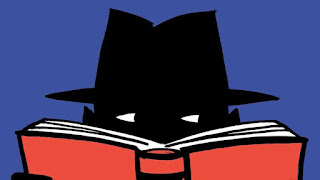Comparing 9, the short, and 9, the full-length movie
Short Film: Initial Impressions
• Plot: The short film is brief, focusing on a small moment of survival in a post-apocalyptic world. Its minimalistic story allows for an immediate and intense connection to the stakes.
• Character Development: Limited but effective. The short film introduces 9 as a resourceful and courageous character, but there’s little time for deeper exploration.
• Special Effects: The animation is visually appealing , especially considering its independent origins. The dark aesthetic establishes a unique and immersive atmosphere.
• Directorial Style: Shane Acker’s direction prioritizes mood. There’s a heavy emphasis on visuals, symbolism, and sound design to tell the story without a lot of dialogue.
• Conventions: The short uses conventions of dystopian storytelling, such as little dialogue, ambiguous settings, and a focus on survival and danger. It leans heavily on suspense and visual storytelling.
Full-Length Film: Initial Impressions
• Plot: Expanded significantly to include more backstory about the apocalypse, the origin of the Stitchpunks, and the antagonist (the Fabrication Machine). It feels more fleshed out but slightly more conventional in its hero-versus-villain structure.
• Character Development: Each Stitchpunk has a more defined personality, and their dynamics add depth. However, some characters feel archetypal rather than complex.
• Special Effects: The expanded budget allows for polished animation and more elaborate action sequences. The world is more detailed, and the apocalyptic setting is richly realized.
• Directorial Style: Acker retains his dark and atmospheric tone but incorporates more conventional narrative structures, such as dialogue-heavy scenes and a clear resolution.
• Conventions: The film uses conventions of incredible storytelling, with a hero’s arc, a clear antagonist, and a group dynamic. There is also a strong focus on hope and rebuilding after destruction.
Comparison
Qualities in the Short Film:
• Efficiency: The short tells a gripping story in a brief amount of time, relying on visuals and atmosphere.
• Ambiguity: The lack of explicit backstory adds mystery, inviting viewers to interpret the world and characters.
• Originality: The short’s minimalist storytelling feels more unique and experimental.
Accomplishments in the Full-Length Film:
• Expanded World-Building: The full-length film provides a clearer context for the apocalypse and the creation of the Stitchpunks.
• Character Exploration: Characters are given more personality and roles within the group.
• Thematic Depth: Themes of sacrifice, unity, and humanity’s legacy are explored more fully.
Personal Preference:
• If you enjoyed experimental and minimalist storytelling, the short might be more appealing for its originality.
• If you value rich world-building and character interaction, the full-length film likely stands out.
• The short’s ambiguity may feel more artistic, while the full-length’s clarity offers a more complete story.
Differences in Conventions
• The short film uses conventions typical of animation, such as limited dialogue and a focus on tone over narrative.
• The full-length film adheres more to mainstream conventions, with a clear act structure, dialogue-driven scenes, and a hero’s arc.



